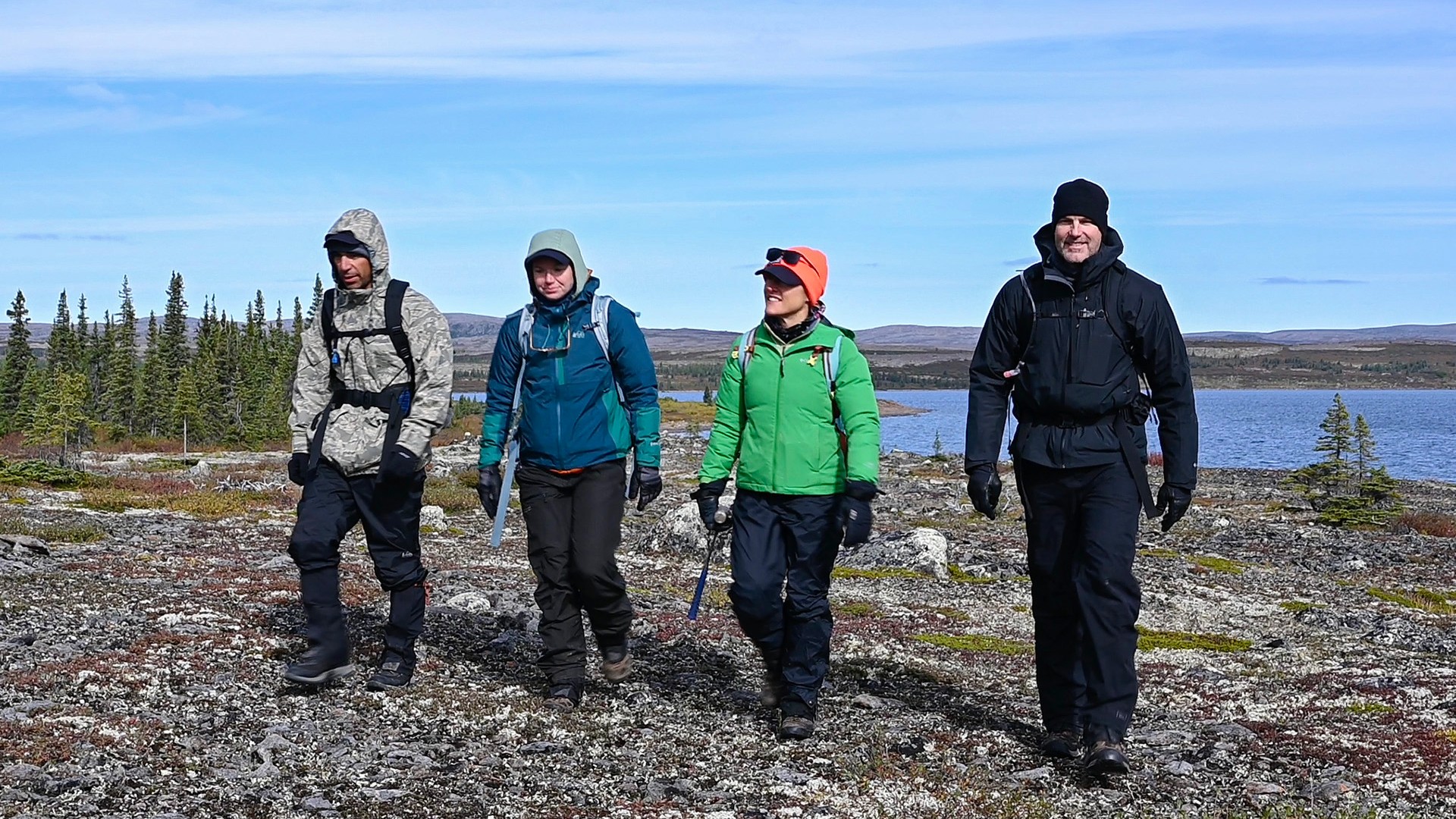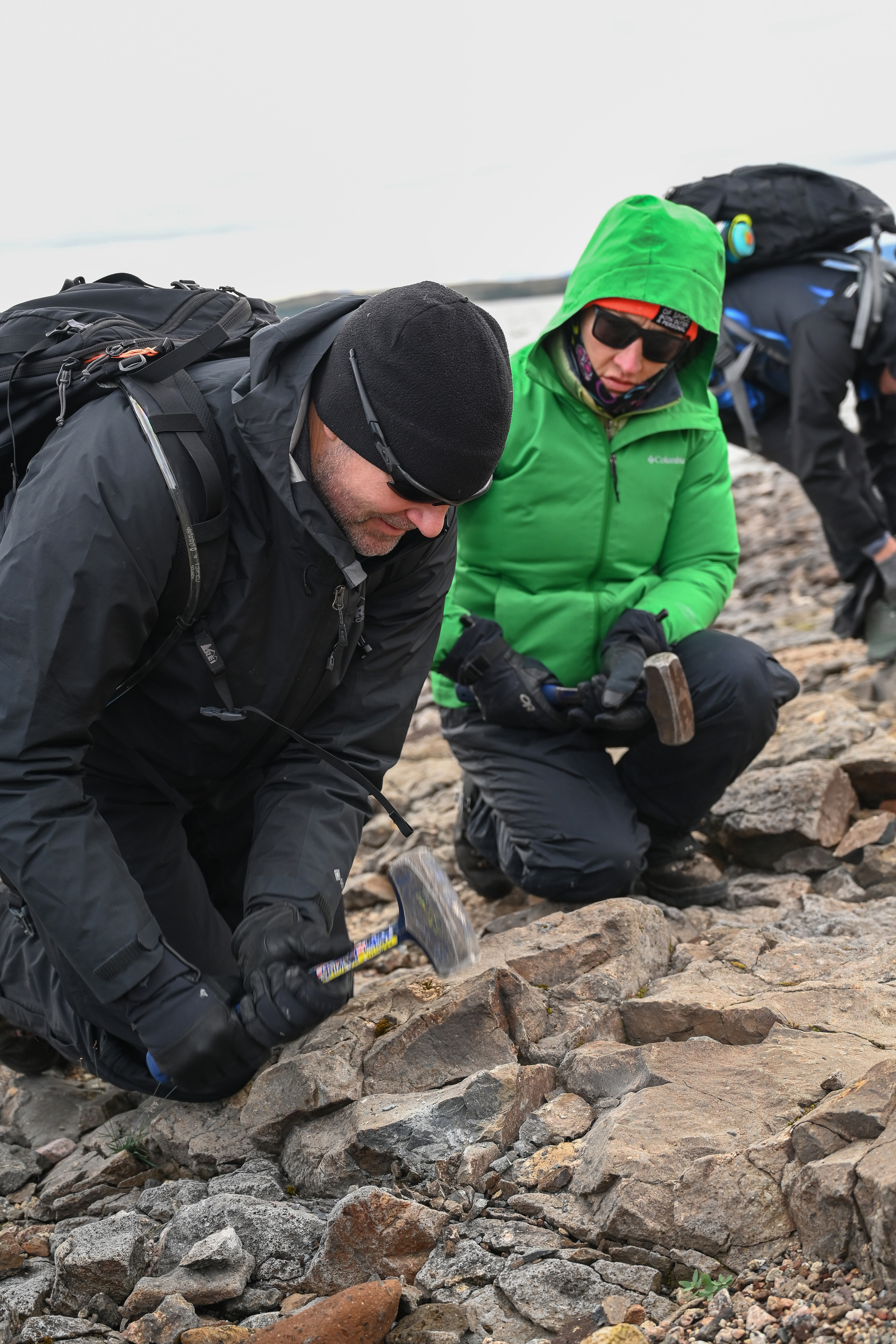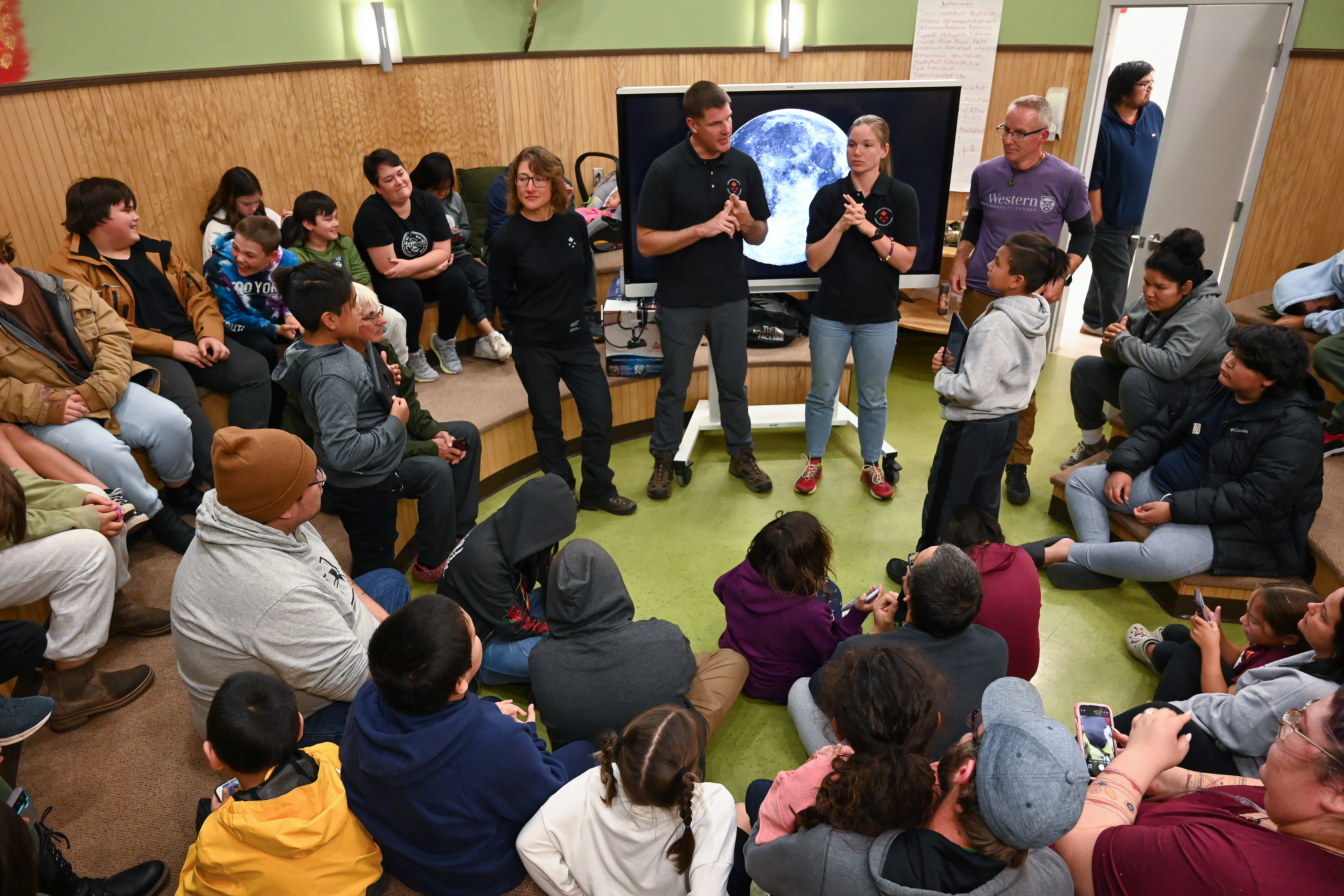See Artemis 2 astronauts explore moon-like crater in Canada (photos)
The crater under exploration was "such a unique analogue for the moon," leader Gordon Osinski said.

Astronauts for the Artemis 2 moon mission, along with potential future lunar crews, practiced their prospecting skills on a Canadian crater this month.
The expedition included Artemis 2 moon astronaut Jeremy Hansen, with the Canadian Space Agency, and NASA astronaut Christina Koch. The two will be mission specialists aboard Artemis 2, the first moon mission to send humans around our neighboring satellite since 1972.
While Hansen and Koch will not be landing on the moon, geology training will assist them with spotting features like craters from afar. Space agencies around the world regularly run geology trips such as this to help astronauts hone their skills in the field, as well as learn how to work in teams in rugged conditions.
Noting that the expedition went to a part of the crater that he never visited before, trip leader and planetary scientist Gordon Osinski (of Western University in Canada) called the excursion "true exploration" on X. "What discoveries we made," he added in the Sept. 5 post, "reminding us of how Kamestastin is such a unique analogue for the moon."
Related: Why Artemis 2 moon launch with astronauts is different from Artemis 1
Joining Hansen and Koch on the expedition were CSA astronaut Jenni Sidey-Gibbons and NASA's Raja Chari. Chari and Sidey-Gibbons were both selected as astronauts in 2017 and are eligible for future mission assignments. Besides which, working with Hansen directly was a callback to their training. Hansen was the first-ever non-American responsible for managing an astronaut candidate class' training schedule, which includes mentoring the new recruits.
Their destination was the crater Kamestastin (also known as Mistastin) in northern Labrador, one of just 31 craters formed by meteorites in Canada, according to CSA documentation. The crater shares features with others that are present on the moon, such as anorthosite, a common rock at the south pole where future Artemis program missions will land.
Breaking space news, the latest updates on rocket launches, skywatching events and more!
"This site is particularly special not only because of the impact itself, but because of the target rock the asteroid hit," Sidey-Gibbons wrote on Instagram. "By learning how to collect samples and identify features here, we are learning how astronauts could identify the most scientifically rich samples to return on a lunar mission."
Read more: See Artemis 3 landing site near moon's south pole in stunning new NASA photos
Because the expedition lay within the traditional hunting grounds of the Mushuau Innu First Nation, guardians, elders and children from those communities were included both in the expedition and in learning activities afterwards. "Hard to leave such a beautiful place, grateful for the experience," Hansen said on X (formerly Twitter) on Sept. 11, thanking the community for the hospitality as well as the gift of their flag.
Osinski shared his considerable lunar experience with the group as well. The planetary scientist is considered one of the top crater experts in Canada, calling himself "Dr. Crater" on X. He is a principal investigator of Canada's expected mini rover on the moon, which will launch in 2026 or so using hardware from aerospace company Canadensys.
Osinski, known as "Oz" to colleagues, will be one of the geologists working directly with the Artemis 3 landing crew, which will land on the moon's surface no earlier than 2025 or 2026. He is also a regular part of NASA astronaut candidate training, focusing on geology.
Hansen, who has made numerous trips with Osinski, was recently credited in a peer-reviewed paper in which Osinski and the team on a 2011 excursion found a very rare type of crater in Saskatchewan, Canada. The transitional crater at Gow Lake, whose type was reclassified scientifically after the team's work, is only known in one other location on Earth: Goat Paddock in northwestern Australia.

Elizabeth Howell (she/her), Ph.D., was a staff writer in the spaceflight channel between 2022 and 2024 specializing in Canadian space news. She was contributing writer for Space.com for 10 years from 2012 to 2024. Elizabeth's reporting includes multiple exclusives with the White House, leading world coverage about a lost-and-found space tomato on the International Space Station, witnessing five human spaceflight launches on two continents, flying parabolic, working inside a spacesuit, and participating in a simulated Mars mission. Her latest book, "Why Am I Taller?" (ECW Press, 2022) is co-written with astronaut Dave Williams.




